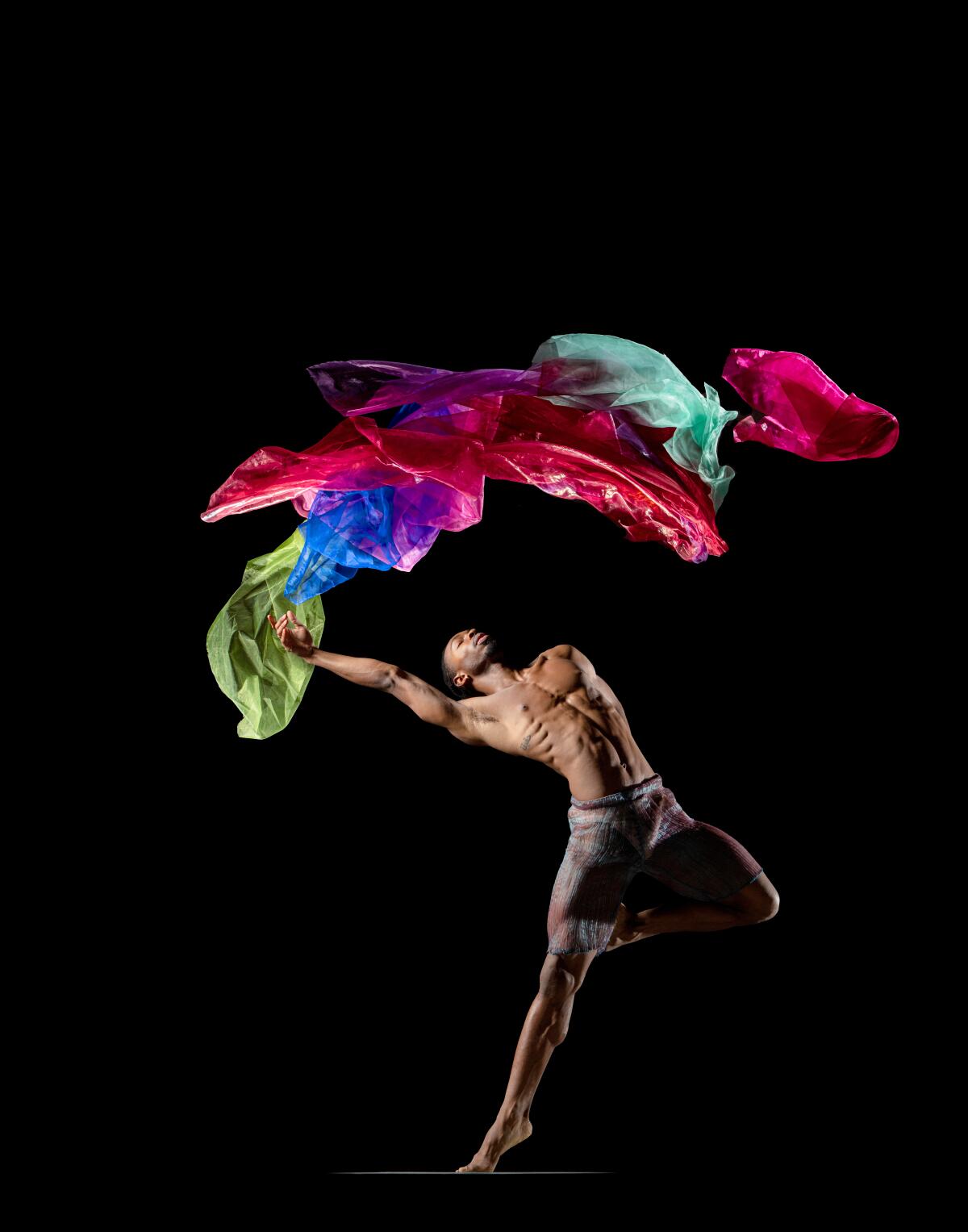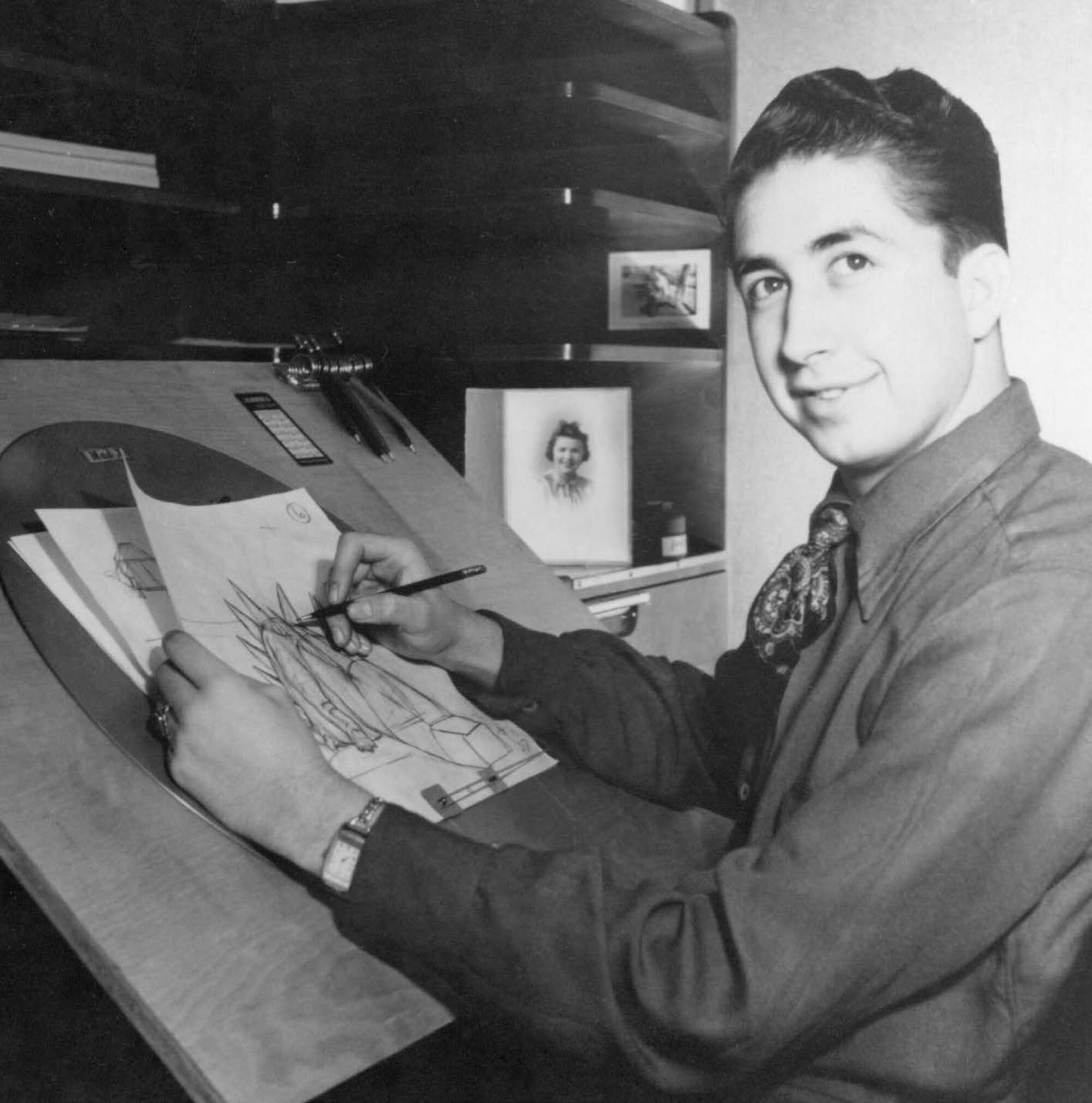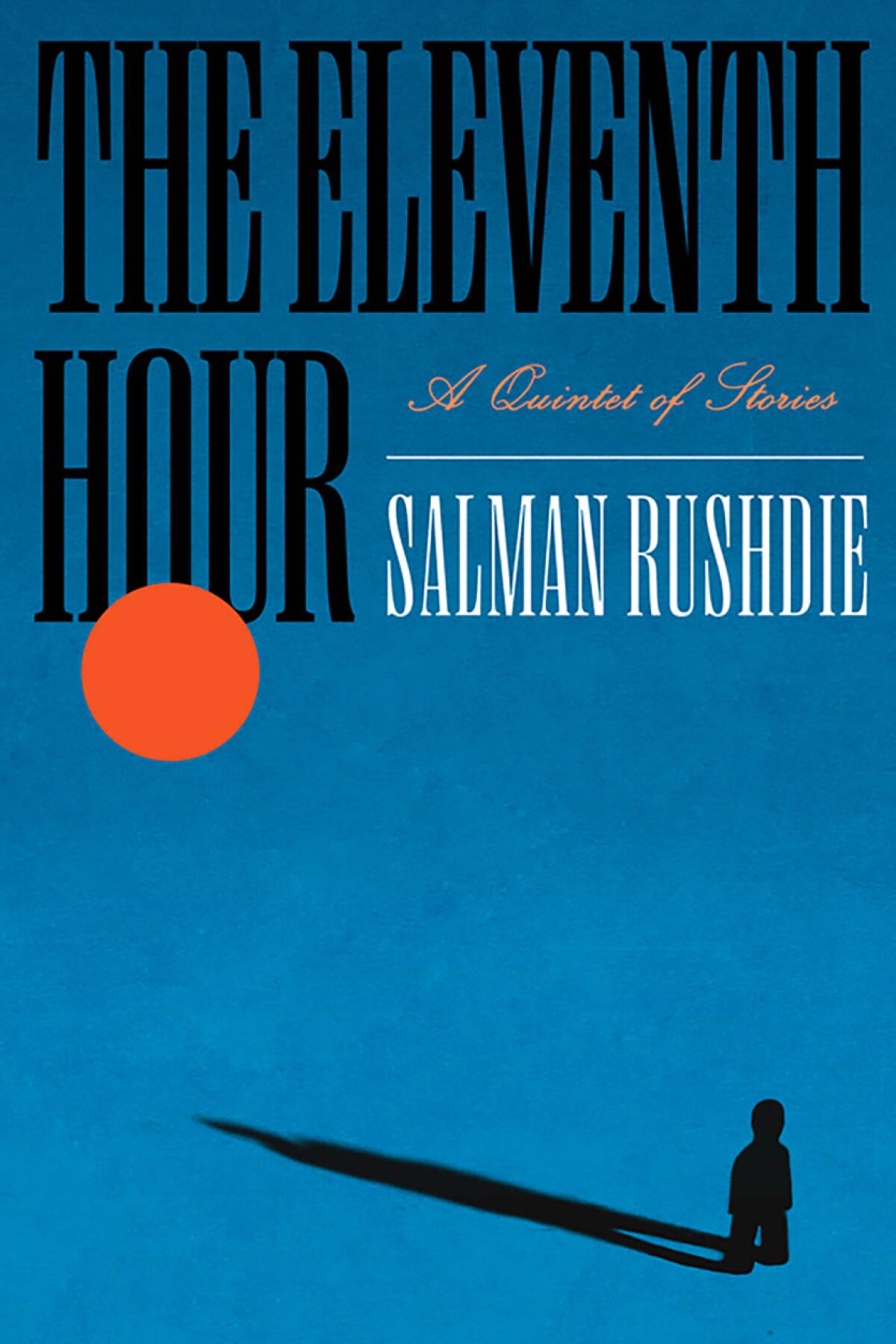Fire-affected drama students head to the Big Apple
Remember the brave, talented theater students at Eliot Arts magnet school who lost their school, homes and theater to January’s Eaton fire and went on to perform their spring musical, “Shrek Jr.,” to a sold-out crowd at the Ahmanson Theatre?
Those kids are still displaced from their school, but not from the tenacious community spirit that guided them through the aftermath of that trauma. Their next chapter: a four-day, three-night class trip to New York City to see the sights and attend Broadway shows and workshops.
“After ‘Shrek’ last spring, I sat down with a group of my advanced theater students, and I said, ‘Dream big. What else would you want in your fantasy world?’ Big things have happened for us this semester after the fires,” their drama teacher, Mollie Lief, said in a phone interview. “And they said, ‘We want to go to New York City.’ And I just thought, ‘OK, we’re gonna make this happen.’”
The class has now met its initial $75,000 fundraising goal toward “Broadway Bound: A drama and dance trip to NYC,” which Lief will lead along with dance teacher Billy Rugh, who choreographed “Shrek Jr.” The funds, which will help cover the partial or full cost of taking 61 seventh and eighth graders to the Big Apple from April 7-10, were raised in about 28 days through a school fundraising campaign app called SnapRaise.
Lief credited actor Gillian Jacobs — who Lief calls “our fairy godmother” — with spreading the word to friends in film and TV, which is why the initial goal was met so quickly. Fundraising remains ongoing for the trip, as well as the school’s spring musical, but the class can now rest easy that everyone will be able to go.
“I think everybody was skeptical that we were going to be able to raise that much money and make it happen. But if Eliot’s good at anything, we are good at making big things happen,” said Lief.
Speaking of which: The other really big thing that Lief wants for the kids is a meeting with Broadway superstar and “Hamilton” creator Lin-Manuel Miranda. Miranda sent a personal message of support to the students via video when they performed at the Ahmanson, so he’s aware of them and their extraordinary story.
“They just love him,” Lief said of Miranda. “We had a Lin-Manuel Miranda day for Hispanic Heritage Month, and everybody dressed up as him or a character from one of his shows. They are all obviously obsessed with ‘Hamilton,’ which is a show we’re trying to see when we’re in New York.”
Three Broadway shows are part of the trip’s itinerary, as well as a theater and dance workshop or two. Also on the agenda: plenty of New York pizza, a jaunt through Central Park, a sightseeing cruise and a Big Bus tour.
“They’re super pumped,” Lief said of the kids who are currently rehearsing for their newest show, “The Somewhat True Tale of Robin Hood.”
On our radar

Grant Gershon will conduct the Los Angeles Master Chorale in David Lang’s “before and after nature” Sunday at Walt Disney Concert Hall.
(Jamie Phan / Los Angeles Master Chorale)
before and after nature
The fall’s third and largest major environment-themed work is David Lang’s “before and after nature,” an evening-length score that was commissioned by the Los Angeles Master Chorale and had its premiere in the spring at Stanford University in conjunction with the Doerr School of Sustainability. Here, Lang explores, in his almost Hildegard-like glowing vocal writing, the human relationship with a nature that doesn’t need us, or want us, yet we insist on being the center of everything and making an inevitable mess of it. The instrumental ensemble is Bang on a Can All-Stars (Lang having been a founder of the New York music institution). The performance includes a video component by Tal Rosner, and Grant Gershon conducts.
— Mark Swed
7:30 p.m. Sunday. Walt Disney Concert Hall, 111 S. Grand Ave., downtown L.A. lamasterchorale.org

A 1989 billboard poster about museum representation by the Guerrilla Girls.
(Getty Research Institute)
How to Be a Guerrilla Girl
The Guerrilla Girls famously shield their identity by wearing gorilla masks in public, but this show will unveil “how-to” information on their effective techniques of data research, distribution and culture jamming. Drawing on the witty protest group’s early archives, acquired in 2008 by the Getty Research Institute, their 40th anniversary will be celebrated by an exhibition of materials outlining the collaborative process that goes into their ongoing demands for art world equity for women and artists of color. A selection from their dozens of posters and ads will be displayed.
— Christopher Knight
Tuesday through April 12, 2026. Getty Center, Research Institute Galleries, 1200 Getty Center Drive, Los Angeles. getty.edu

The Broadway production of the musical “Suffs.”
(Joan Marcus)
Suffs
This musical by Shaina Taub, which won Tony Awards for book and original score, turns the history of the 20th century American women’s suffrage movement into a show that rallies the spirit of democracy. The plot follows Alice Paul and a new generation of radical activists who are testing new tactics in the fight to secure women the right to vote. During the Broadway run, Hillary Clinton, one of the show’s high-profile producers, went on the stump for “Suffs,” endorsing its much-needed lesson that progress is possible, if never guaranteed.
— Charles McNulty
Wednesday through Dec. 7. Hollywood Pantages Theatre, 6233 Hollywood Blvd., Hollywood. broadwayinhollywood.com
The week ahead: A curated calendar
FRIDAY

Olga de Amaral, “Gran Muro, Panel 7B,” 1976. Cotton, wool, horsehair, sisal and/or jute, rayon, nylon, raffia. 130 x 175 in.
(Mark Waldhauser / Photo from Lisson Gallery)
Olga de Amaral
This solo exhibition of work from the Colombian artist’s six-decade career emphasizes her use of weaving, painting and sculpture, with variable scale, form and materials, including linen, wool, horsehair, Japanese paper, acrylic and precious metals.
Opening, 6-8 p.m. Friday; 10 a.m.-6 p.m. Tuesday-Saturday. Lisson Gallery, 1037 N. Sycamore Ave. Los Angeles. lissongallery.com
60 Miles East: Riverside’s Underground Punk Rock, Hardcore & Ska Scene, from the late 1980s to early 2000s
An exhibit of photography devoted to a distinctive music scene that made the most of its outsider existence in exploding exurbia.
Riverside Museum of Art, Art Alliance Gallery, 3425 Mission Inn Ave. riversideartmuseum.org
SATURDAY

Yaphet Kotto, Sigourney Weaver and Ian Holm in the 1979 film “Alien.”
(Robert Penn / 20th Century Fox)
Alien
Ridley Scott’s 1979 sci-fi classic screens in 35 mm to capture all of its oozing, Xenomorphic chest-bursting glory. Sigourney Weaver, Ian Holm, Yaphet Kotto and Tom Skerritt star.
7:30 p.m. Academy Museum, 6067 Wilshire Blvd. academymuseum.org
Creative Continuities: Family, Pride and Community in Native Art
Three contemporary Plains Indian artists, John Pepion (Blackfeet), Brocade Stops Black Eagle (Crow) and Jessa Rae Growing Thunder (Dakota/Nakoda), each curated a section of this exhibition exploring aspects of Native culture through the lens of works created by their ancestors.
Saturday-June 2027. Autry Museum of the American West, 4700 Western Heritage Way, Griffith Park. theautry.org
Jlin
A 2023 Pulitzer Prize finalist, the electronic music composer a.k.a. Jerrilynn Patton’s latest album featured collaborations with Philip Glass, Björk and Kronos Quartet.
8 p.m. Saturday. UCLA Nimoy Theater, 1262 Westwood Blvd. cap.ucla.edu

Baratunde Thurston will perform Saturday at Carpenter Center.
(Roy Rochlin / Getty Images for Unfinished Live)
An Evening with Baratunde Thurston
The comedian and futurist ponders interrelationships between people, nature and technologies through stories.
8 p.m. Carpenter Center, 6200 E. Atherton St., Long Beach. carpenterarts.org
SUNDAY
Radical Histories: Chicano Prints from the Smithsonian American Art Museum
Six decades of art featuring 60 works by 40 or so artists and collectives that reflects an era of rebellion and cultural solidarity.
Through March 2, 2026. The Huntington, 1151 Oxford Road, San Marino. huntington.org
Something’s Gotta Give
The American Cinematheque’s tribute to Diane Keaton continues with director Nancy Meyers’ 2003 romantic comedy co-starring Jack Nicholson, Amanda Peet and Keanu Reeves. Meyers joins film critic Katie Walsh for a Q&A.
7 p.m. Aero Theatre, 1328 Montana Ave., Santa Monica. americancinematheque.com
Takács Quartet
The chamber music ensemble performs a program featuring works by Joseph Haydn, Clarice Assad and Claude Debussy.
4 p.m. Broad Stage at Santa Monica College Performing Arts Center, 1310 11th St. broadstage.org
TUESDAY
Brahms Strings
Members of the L.A. Phil perform contemporary American composer Jessie Montgomery’s “Strum” as well as19th century masterworks by Johannes Brahms.
8 p.m. Tuesday. Walt Disney Concert Hall, 111 S. Grand Ave., downtown L.A. laphil.com
THURSDAY
Lonnie Holley and Moor Mother
The two artists collaborate for an evening of free jazz and spoken word rooted in Afrofuturism.
7:30 p.m. The Wallis, 9390 N. Santa Monica Blvd., Beverly Hills. thewallis.org
Prieto
The L.A. premiere of poet and performance artist Yosimar Reyes dives into his experience growing up queer in East San Jose.
8 p.m. Thursday; 8 p.m. Nov. 21-22; 2 p.m. Nov. 23. The Rosenthal Theater at Inner-City Arts, 720 Kohler St., Los Angeles. brownpapertickets.com
New Original Works (NOW)
The third weekend of REDCAT’s annual festival of experimental performance features a program of works by Lu Coy, jeremy de’jon guyton and Luna Izpisua Rodriguez.
8 p.m Thursday-Saturday. REDCAT, 631 W. 2nd St., downtown L.A. redcat.org
Shelley Conducts Carmen and Daphnis and Chloe
Artistic and music director designate Alexander Shelley conducts the Pacific Symphony in a program of Bizet and Ravel, as well composer/pianist Gabriel Montero’s “Latin Concerto.”
8 p.m Thursday; 8 p.m. Nov. 21-22. Segerstrom Center for the Arts, 600 Town Center Drive, Costa Mesa. pacificsymphony.org
Culture news and the SoCal scene

The Lucas Museum of Narrative Art has officially set its opening date for Sept. 22, 2026. The Times got an exclusive peek at a few interiors, including the research library and the entrance lobby. We also took some great photos of the building as it currently looks and made a short video. Take a peek.
Times classical music critic Mark Swed weighs in on opera’s “long and curious fetish for the convent” in his review of Sarah Kirkland Snider’s “sincere and compelling ‘Hildegard.’” L.A. Opera’s collaboration with Beth Morrison Projects is based on “a real-life 12th century abbess and present-day cult figure, St. Hildegard von Bingen.” The show, which premiered at the Wallis last week, “operates as much as a passion play as an opera,” Swed writes.
Swed also took in a show featuring Zubin Mehta, the 89-year-old Los Angeles Philharmonic’s conductor emeritus, as he led the orchestra in Bruckner’s Eighth Symphony. Swed calls Mehta “a living L.A. icon.”
Times theater critic Charles McNulty touched down in New York City to review “The Queen of Versailles,” an adaptation of Lauren Greenfield’s 2012 documentary about a family building a supersized American home. McNulty found the musical unwieldy despite Michael Arden’s superb direction, but he reserved special praise for its star, Kristin Chenoweth, “who is bearing the weight of a McMansion musical on her diminutive frame and making it seem like she’s hoisting nothing heavier than a few overstuffed Hermes, Prada and Chanel shopping bags.”

Sculptures by the entrance of the Norton Simon Museum in Pasadena.
(Etienne Laurent / For The Times)
I enjoyed writing about the $15-million renovation of the Norton Simon Museum, which has been unveiled in tandem with the organization’s 50th anniversary. In addition to new signage, improved curb appeal and a more accessible pedestrian entryway, the museum restored the 115,000 Heath tiles that clad the building’s exterior.
Times art critic Christopher Knight has the scoop on trouble at the Palm Springs Art Museum, which is facing a trustee revolt after hiring its new director, Christine Vendredi — the fourth such leader in just seven years. A week after the hire, “the chair of the search committee tasked with filling that position, trustee Patsy Marino, resigned from the museum’s board citing ‘inappropriate interference and attempts to influence the process’ on the part of the museum’s executive committee, individual trustees and other unidentified museum staff and donors,” Knight writes. To date, 22 trustees have exited, and it has been revealed that no other candidates were interviewed for the role.
Finally, read how the creators behind the new “Paranormal Activity” play are bringing jump scares to the Ahmanson Theatre. Hint: It’s all about what you don’t see.
Enjoying this newsletter? Consider subscribing to the Los Angeles Times
Your support helps us deliver the news that matters most. Become a subscriber.

Eddie Izzard arrives at the London premiere of “Moonage Daydream” in 2022.
(Scott Garfitt / Invision / AP)
British comedian and actor Eddie Izzard is bringing her solo performance of Shakespeare’s “Hamlet” to L.A.’s Montalbán Theatre for seven nights from Jan. 22-31. While in New York, the show received a New York Outer Critics Circle Award nomination for outstanding solo performance, and a nomination for the New York Drama League’s Distinguished Performance Award.
Wallis Annenberg Center for the Performing Arts announced a major departure: Robert van Leer is stepping down as executive director and chief executive of the Wallis to take on the role of the new performing arts program director of the William and Flora Hewlett Foundation. Van Leer has been at the Wallis since April 2023, and was instrumental in inviting a host of prominent performing arts organizations to make the Wallis their home, including Los Angeles Chamber Orchestra, L.A. Dance Project, Los Angeles Ballet, BODYTRAFFIC, and Tonality.

“Specter,” a sculptural installation for Desert X by L.A. artist Sterling Ruby, just outside Palm Springs in 2019.
(Carolina A. Miranda / Los Angeles Times)
Big changes are coming to Desert X as it plans its sixth exhibition in the Coachella Valley, and its 10th worldwide. Over the past decade, the organization has commissioned more than 100 artists to create site-specific work in the desert. For its 10th anniversary exhibition, Desert X has announced new dates and an extended timeline. The next show is scheduled to open on Oct. 30, 2027, and will run through May 7, 2028, to coincide with other important area cultural events including the Palm Springs International Film Festival, Modernism Week, Frieze Los Angeles and the Coachella Valley Music and Arts Festival.
Carol Burnett has endowed a new scholarship at the UCLA School of Theater, Film and Television. The annual award will support undergraduate students in the school’s Ray Bolger Musical Theater Program. The inaugural scholarship has been awarded to first-year theater major Alexa Cruz.
— Jessica Gelt
And last but not least
Looking for a decadent holiday gift for an art lover? How about a $295 chocolate bar made by andSons Chocolatiers in collaboration with Ed Ruscha? The 73% Peruvian dark chocolate bar is an edition of 300 and comes in a cloth-bound box, which, according to the Beverly Hills-based chocolate company’s website, features “a reproduction of Ruscha’s 1971 lithograph ‘Made in California’” and “bears the relief of the West Coast’s rugged topography from the Pacific Ocean eastward to the Santa Lucia Mountains.”


























































